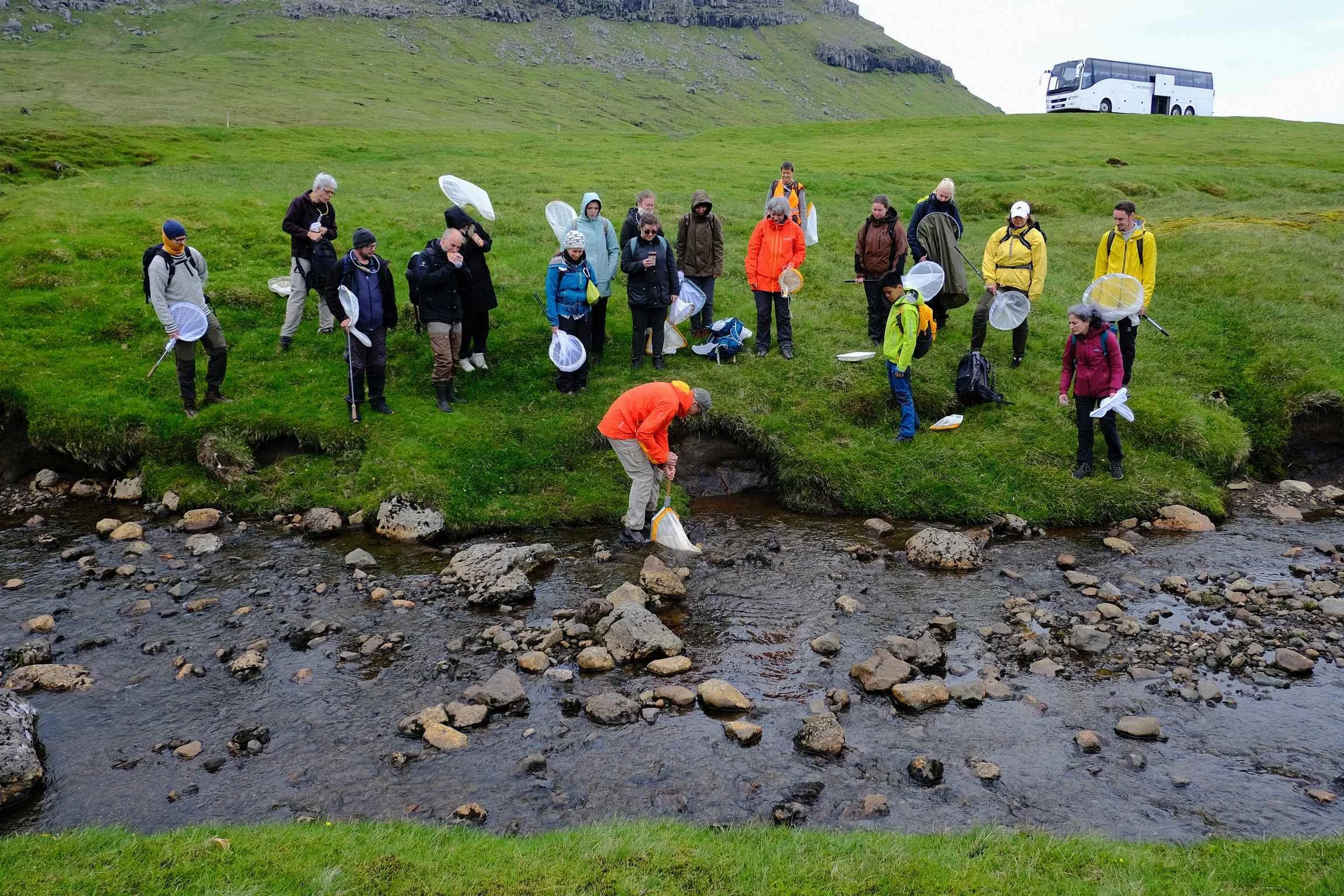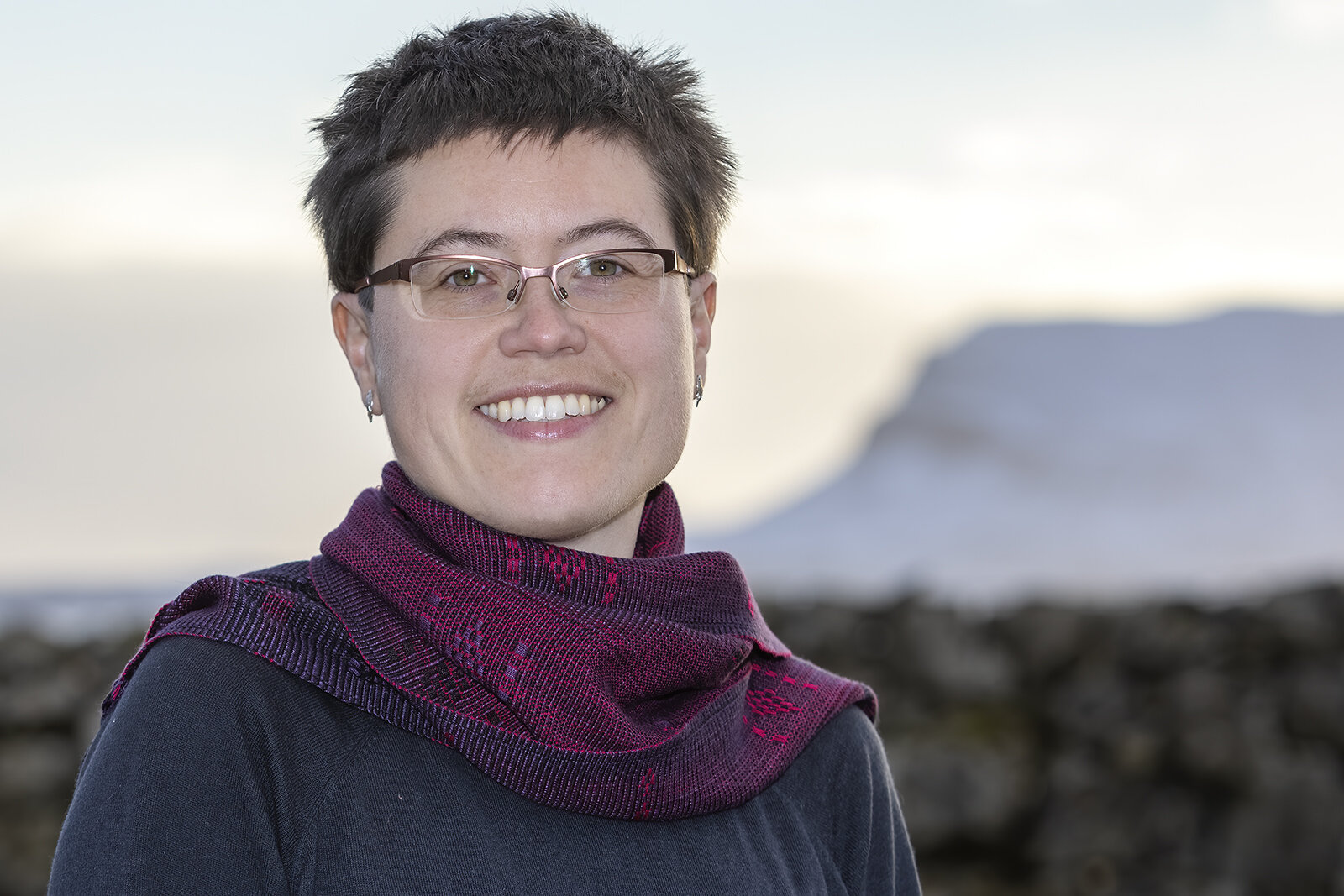Fly fun on Sandoy
Plenty of flies and midges were collected using sweep nets. Photo: Leivur Janus Hansen.
Flies and midges (Diptera) are among the most abundant and diverse insects in the Faroes. But it takes a lot of effort and expert knowledge to collect and identify them. Thus, Tjóðsavnið is happy to have hosted an international course on fly identification in Sandur, organised by ForBio (Norwegian Research School in Biosystematics) and STI (Swedish Taxonomy Initiative).
Thirtheen participants from Norway, Sweden, Denmark, Faroes, and several other countries took part in the intense week-long course from 23rd to 30th June 2023, most of them Master and PhD students but also researchers at various stages in their career. The team of teachers consisted of experts for different groups of Diptera: Elisabeth Stur and Torbjørn Ekrem (NTNU University Museum in Trondheim), Thomas Pape (Natural History Museum of Denmark), Emily Hartop (Museum für Naturkunde Berlin) and Jostein Kjærandsen (Arctic University Museum of Norway, UiT). Together with the Department of Terrestrial Zoology at Tjóðsavnið, they came up with an exciting and variable programme, consisting of lectures, practical labwork behind the stereo-microscopes and collection trips to Koltur, Streymoy, Skúgvoy and various locations on Sandoy. We collected flies from a variety of habitats such as woodland (Viðarlundin in Tórshavn), a mountainous area (Oyggjarvegur), and sandy beach and dunes (Mølheyggjar in Sandur).
Course participants are being shown how to collect aquatic Diptera larvae with a kick-net in a stream next to Oyggjarvegur. Photo: Piotr Gadawski
Having so many fly experts in one place immediately results in discoveries: several new Diptera species were recorded for the first time in the Faroe Islands - even two new Diptera families and one new subfamily of non-biting midges (Chironomidae)! And of course we got many exciting specimens for our growing entomological collection.
We would like to thank the University of the Faroe Islands, Biofar and Glasir for lending us microscopes for the course participants, Sand municipality for help and Hiddenfjord for additional funding.
Left: Rymosia fasciata. Photo: Jostein Kjærandsen. Top right: Detailed drawing of the genitalia of R. fasciata by E.O. Engel Bottom right: Photo of the genitalia of R. fasciata by Jostein Kjærandsen.
Jostein Kjærandsen found a fungus gnat (Mycetophilidae) which he recognised as Rymosia fasciata. He had also identified this species from the Faroes in 1992, when he authored a paper on Faroese fungus gnats. In 1915 already, E.O.Engel had studied fungus gnats in the Faroes. Although some of Engel’s identifications can be questioned, his excellent and detailed drawings are so good that there is little doubt about the species he found.




